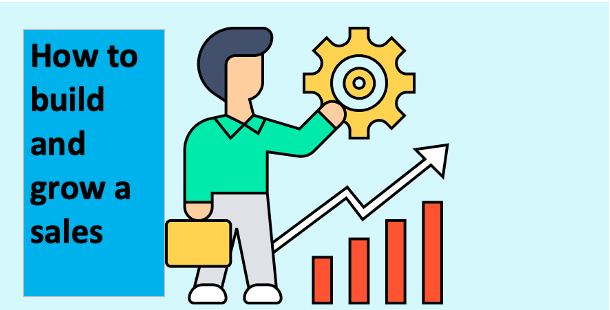Every business would want to grow its sales pipeline.Seeking guidelines on how to build and grow a sales pipeline is a good approach to your business.In this article, we shall take you through this step by step.
What’s a sales pipeline?
A sales pipeline involves a series of steps that a business owner or salesperson takes o to convert a prospect from being just an opportunity to becoming a customer. It involves moving from one step to another until you have won the customer.
The importance of a sales pipeline.
A sales pipeline allows you to track every stage of your sales cycle and makes you able to predict when a prospect becomes a sale. This gives you an insight into your sales targets and hence makes you understand how you are progressing.
Stages of building a sales pipeline.
The stages involved in building a sales pipeline include:
- lead generation
- lead nurturing
- dis qualification
- sales qualification
- closing the deal
- post-sale follow-up
How to build and grow sales pipeline.
Here are the basic steps that can help you build a sales pipeline regardless of the size of your business.
1.Identify and narrow down your target buyers.
You need to identify your customers and try to establish what is common among them. It doesn’t matter what number you have but you should know the patterns related to issues such as industry, geographic location, funding history, and any other updates.
You need information about your customers to help you build your pipeline strategy. So you begin by building your sales pipeline from the few customers you have already worked with and had success with.
2.Build a targeted list of your most important prospects.
After identifying your most important prospects, you can now look for potential buyers that look like the ones you just identified. You can use fit data, intent data, and opportunity data as the raw materials for building the sales pipeline.
Fit data refers to the demographic and demographic information that could translate into company and industry size at the company level and also boils down to contact information and job title at the individual level.
For example, a sale may never happen if a prospect acts where there is no authority to sign a check. They have to refer to the financial services of the company to finalize the transaction. So the financial services is fit data in this case.
Opportunity data includes funding events, hiring events, new initiatives, and other moves that indicate investments.
Intent data are behavioral signals that link a buyer to an interest in a solution. This varies from how they spend time and the exact time they spend on your website and how they deal with your content.
When you are at this stage, you can now have the authority to structure how to get out and reach out.
3.Develop relevant messaging and content for your prospects in the pipeline.
There are several ways to go about this. You can use brand storytelling or allow your target buyer peers to tell the story for you. There could be a simple case study of a customer highlighting why and how your product created value for them.
You then go ahead and use that information by publishing such positive information on your website and shooting a short clip with the customer. You can create research reports or write several blogs that speak directly to your customers. You need to make this story unique.
Ultimately, connecting with your customers depends on how your team captures and tells these stories for the benefit of your sales pipeline.
4.Test a variety of demand-generation tactics.
It’s now time to use both the inbound and outbound tactics to grow your pipeline. Some of the things you need to get involved with include the following:
Build a clear website
You need to build a website that makes it easy for your customers to contact you. Although a strong website is the key to your long-term growth, it takes time to bring in the returns and so you should be patient.
Invest in paid advertising
You should focus on the keywords that are most often searched when customers are looking for a solution like yours. Paid advertising on search engines and social media helps to build brand awareness and is an important key in bringing in an influx of inbound leads.
Emails and phone calls
You should also focus on a sequence of emails, phone calls, and social engagements for your social accounts. You need to have at least ten touch points although more would be better depending on the target buyer’s company or role.
Invest in services that allow you to push your content
To have a successful drive, you should invest in services that allow you to push your content, videos, and other things to your clearly defined audience. They’re sent directly to you as leads.
Host events with key influencers and partners
Hosting events with key influencers and partners in your industry plays a pivotal role in making you expand your reach. You can invite a mixture of customers and prospects and educate them on a vibrant topic although not necessarily about your product. This helps you build a personal relationship with them and can help you build your sales pipeline without necessarily getting involved in expensive trade fairs.
SUMMARY.
In order to build and grow a sales pipeline, you should build a great product that meets market needs, know your customers, create a story that connects with the market and engage your target buyers through a variety of highly relevant and personalized methods. This will help your business to grow.

